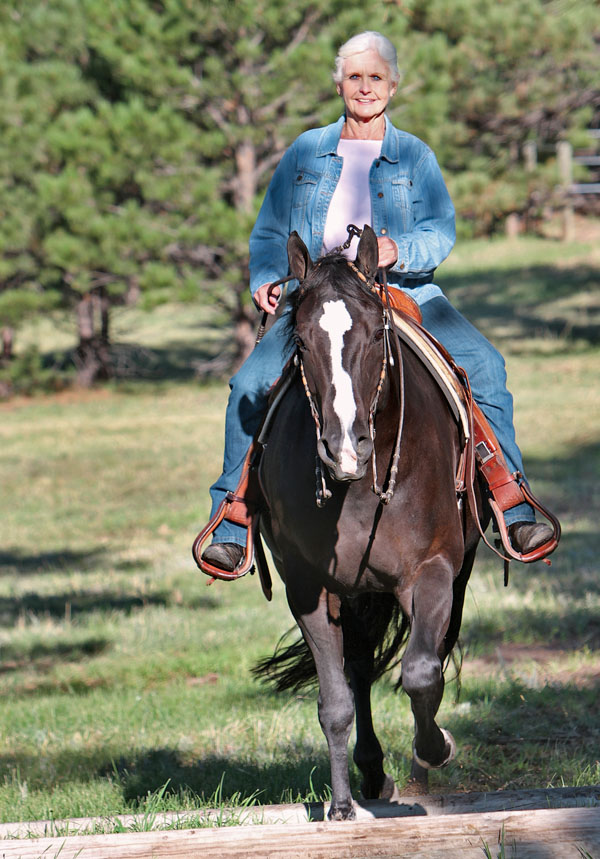Adult riders deal with a lot of issues that kids don’t. One of them is the fear of making a mistake, generally coupled with anxiety over displeasing their riding instructor. When I’m giving a lesson, I don’t want my student turning toward me to see if she’s “doing it right.” I want her totally focused on her horse, instead.
[MORE: CONFIDENCE TIPS]

I’ll say, “Don’t look at me. It’s not about me, or even about you. It’s about your horse—pay attention to him and what he’s telling you.”
When you fully focus on your horse and how he’s responding to your cues, you’re getting the feedback you need the most. That’s what’s going to tell you whether you’re “doing it right”—not the expression on your trainer’s face.
Why this matters. Yes, you need to listen to your trainer and learn the skills he or she is teaching you—how and when to use your hands, how and when to use each leg. But even more important is learning to feel how your horse is responding, as that’s what truly opens the line of communication between the two of you.
I’ve seen a rider’s horsemanship make a 180-degree improvement when she finally realizes where her focus should be. Listening to your horse makes you a subtler and more effective rider.
This doesn’t apply only to show horses, either. Your good old trail horse needs attention and focus from you, too. You can be using the information you got from your riding coach, or from that clinic or magazine article—that’s fine. But you also must use your connection to your horse to catch and understand what he’s telling you. When you do, every ride becomes more effective and enjoyable.
Learning to ‘read.’ How does it work? Let’s say you want your horse to step laterally away from your leg. You’re in a lesson, and your instructor has told you how to apply pressure with your heel just behind the cinch to ask him to step to the side.
When you ask, however, your horse doesn’t respond. At this point, don’t look to your instructor for what to do next. Instead, concentrate on what your horse is “telling” you. If you stay focused on him, you may notice, for example, that his head has come up and he’s bracing in his neck. This is something you’ll need to deal with before you can expect a response from your lateral cue.
So you lift your hand and close both legs lightly and ask him to soften through his poll. When he does, getting round through his topline and giving his full attention to you, then you ask for that sideways step again, a little more assertively. And, presto! You’ve figured it out, and make the correction, and your horse now responds as you’ve asked him to.
Congratulations—you’ve read your horse. You’re becoming a horseman, and not just a rider.
Bobbie Emmons coaches clients to state and national titles in Paint and Quarter Horse competition. All told, she’s trained more than 50 youth, amateur, and open world champions and reserve world champions, with all-around competition a specialty. Her Bobbie Emmons Show Horses is located in Plymouth, California, 40 miles east of Sacramento.






